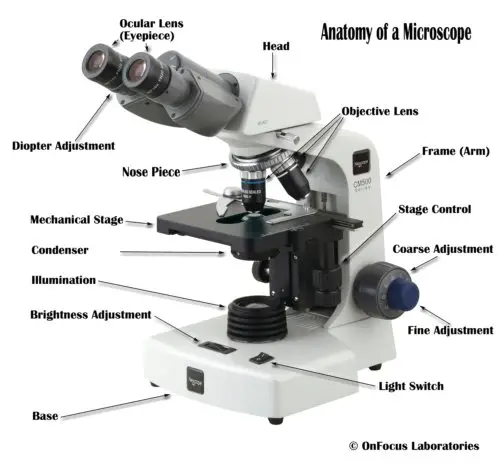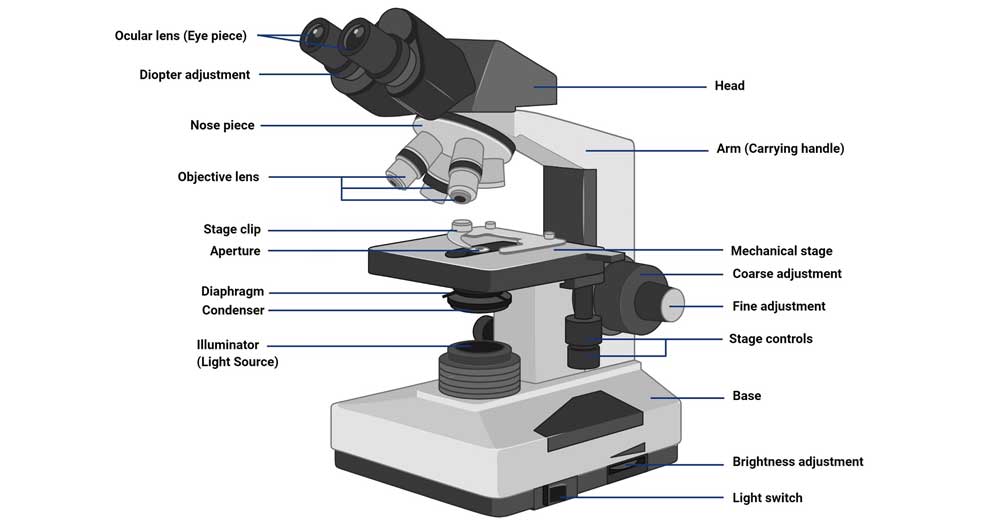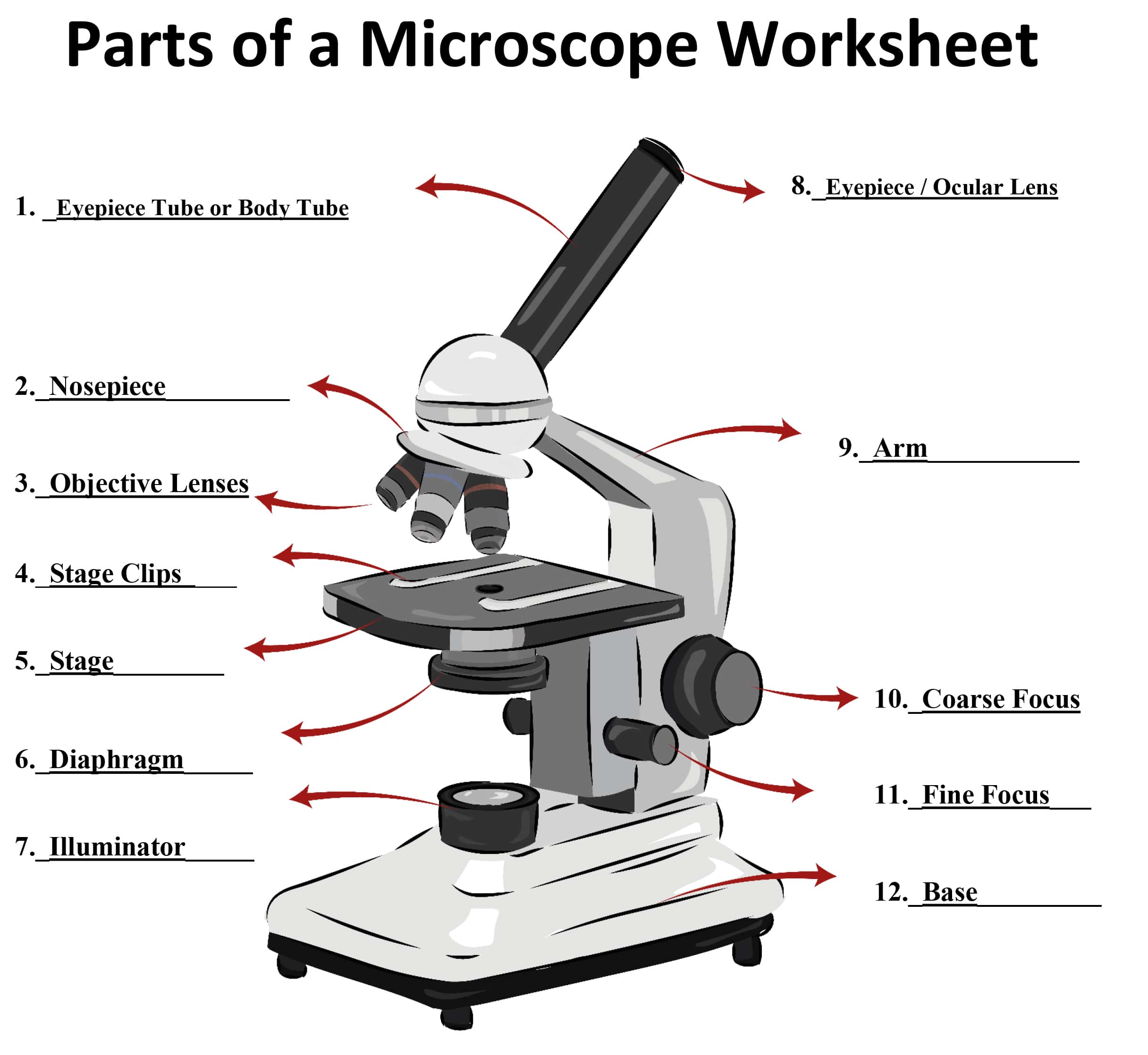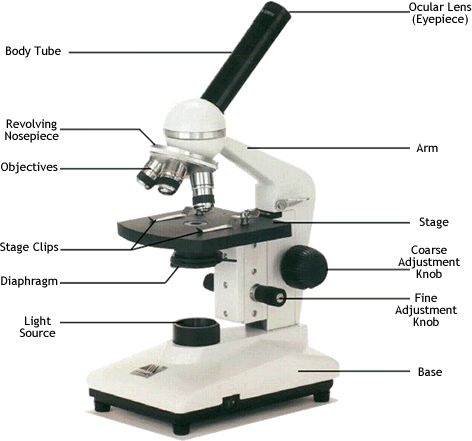One moves it left and right the other moves it forward and back. The inverted microscope stage is similar in its basic overall design to the mechanical stage illustrated in Figure 1.

Microscope Parts And Functions
Consists of two knobs.

. One knob moves the stage left and right while the other moves it forward and backward nosepiece. A microscope mechanical stage allows the user to maneuver the samples under the microscope left and right or forward and backward simply by turning a small knob. The rack stop is a small piece of screw located at one end of the stage nearest to the main frame.
While observing through the eyepiece while focusing move the mechanical stage and thus the slide containing the specimen using the X knob which moves the stage right and left and the Y knob which moves the stage back and forth. These stages are made to work smoothly and withstand the trials of use. One knob moves the slide left.
Moving the lever to the left increases the light. The flat platform that supports the slides. When using a mechanical stage one of two knobs are rotated to move the slide in very small increments either left to right or forward and back.
When you move the slide of the microscope to the right any object on the slide as well as the slide itself will appear to move to the left. One that moves the mechanical stage left to right and one that moves it front to back. Some stages have locater marks on them to allow the user to note the position of something interesting.
Both stages have translational controls that allow the stage and specimen to be moved in both the X and Y directions. If your microscope has a mechanical stage the slide is controlled by turning two knobs instead of having to move it manually. This is the part of the microscope that holds two or more objective lenses and can be rotated to easily change power magnification.
This device does not allow one to move easily in any direction but rather front and backward movement can only be easily accomplished in an arc. The microscope mechanical stage below can be put on the microscope above by removing the stage clips and screwing the mechanical stage onto the flat microscope stage. Turning the knob away from.
Moves the mechanical stage holding the slide forward and backward. The stage control is a knob that can move the stage to a certain degree up down left and right so that the specimen is perfectly aligned with the objective lens. The X-axis control moves the specimen right and left.
This control as seen on the Mirand Microscope on this site used a top stage plate fixed to the left side of the stage by a screw in a slot and moved on the right side by a lever. A microscope mechanical stage gives the user much more control when viewing the sample and makes it easier to keep that sample inside the microscope field of view. The Y-axis control moves the specimen slide back and forth.
This will help in moving the specimen under observation slowly thus providing a good view. Regulates amount of light shinning up through the slide low power objective usually magnifies 10X excluding ocular magnification mechanical stage knobs two knobs that allow for movement of the mechical stage. Moves the mechanical stage holding the slide left and right.
The black flat platform on which your slide rests mechanical stage the silver or black apparatus that actually holds the slide and moves it to position it on the stage stage adjustment knobs move the mechanical stage. Revolving Nosepiece or Turret. The main difference is the large stage opening that accommodates an insert on the inverted microscope stage.
Most are made from iron or aluminum. If your microscope has a mechanical stage you will be able to move the slide around by turning two knobs. Stage clips hold the slides in place.
Moving the lever to the right decreases the light.

Parts Of A Microscope With Functions And Labeled Diagram

Parts Of A Microscope Smartschool Systems

The Parts Of A Compound Microscope And How To Handle Them Correctly Human Anatomy And Physiology Lab Bsb 141

0 Comments